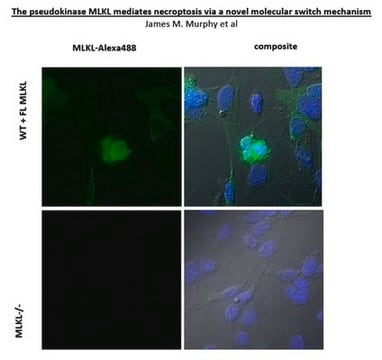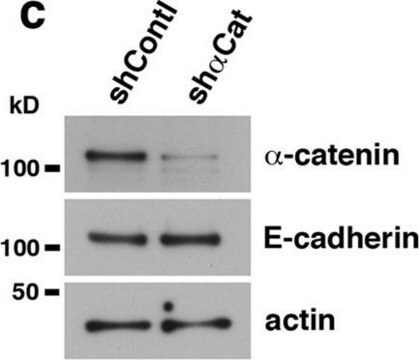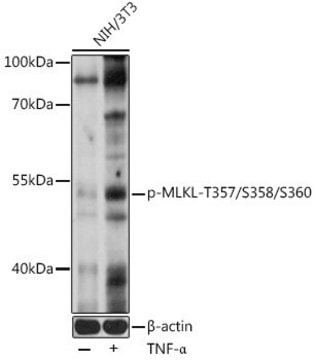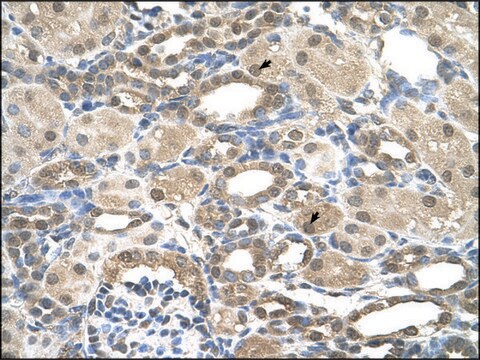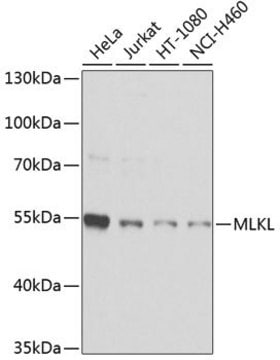MABC1158
Anti-phospho-MLKL (Ser345) Antibody, clone 7C6.1
clone 7C6.1, from mouse
Synonym(e):
Mixed lineage kinase domain-like protein
About This Item
Empfohlene Produkte
Biologische Quelle
mouse
Qualitätsniveau
Antikörperform
purified antibody
Antikörper-Produkttyp
primary antibodies
Klon
7C6.1, monoclonal
Speziesreaktivität
mouse
Methode(n)
ELISA: suitable
immunocytochemistry: suitable
western blot: suitable
Isotyp
IgG2bκ
NCBI-Hinterlegungsnummer
UniProt-Hinterlegungsnummer
Versandbedingung
ambient
Posttranslationale Modifikation Target
phosphorylation (pSer345)
Angaben zum Gen
mouse ... Mlkl(74568)
Allgemeine Beschreibung
Spezifität
Immunogen
Anwendung
Apoptose & Krebs
Immunocytochemistry Analysis: A representative lot detected phospho-MLKL (Ser345) in Immunocytochemistry applications (Rodriguez, D.A., et. al. (2016). 23(1):76-88).
Western Blotting Analysis: A representative lot detected phospho-MLKL (Ser345) in Western Blotting applications (Rodriguez, D.A., et. al. (2016). 23(1):76-88).
Qualität
Western Blotting Analysis: A 1:4,000 dilution of this antibody detected phospho-MLKL Ser345 in 20 ug of lysate from MLKL -/- mouse embryonic fibroblasts expressing doxycycline-inducible wild-type MLKL-Flag-C construct and treated with TNF alpha (10 ng/mL) and Z-VAD-FMK (25 uM).
Zielbeschreibung
Physikalische Form
Lagerung und Haltbarkeit
Sonstige Hinweise
Haftungsausschluss
Not finding the right product?
Try our Produkt-Auswahlhilfe.
Lagerklassenschlüssel
12 - Non Combustible Liquids
WGK
WGK 1
Flammpunkt (°F)
Not applicable
Flammpunkt (°C)
Not applicable
Analysenzertifikate (COA)
Suchen Sie nach Analysenzertifikate (COA), indem Sie die Lot-/Chargennummer des Produkts eingeben. Lot- und Chargennummern sind auf dem Produktetikett hinter den Wörtern ‘Lot’ oder ‘Batch’ (Lot oder Charge) zu finden.
Besitzen Sie dieses Produkt bereits?
In der Dokumentenbibliothek finden Sie die Dokumentation zu den Produkten, die Sie kürzlich erworben haben.
Unser Team von Wissenschaftlern verfügt über Erfahrung in allen Forschungsbereichen einschließlich Life Science, Materialwissenschaften, chemischer Synthese, Chromatographie, Analytik und vielen mehr..
Setzen Sie sich mit dem technischen Dienst in Verbindung.